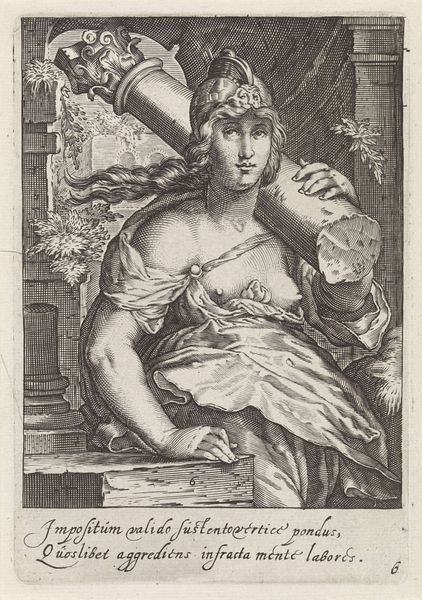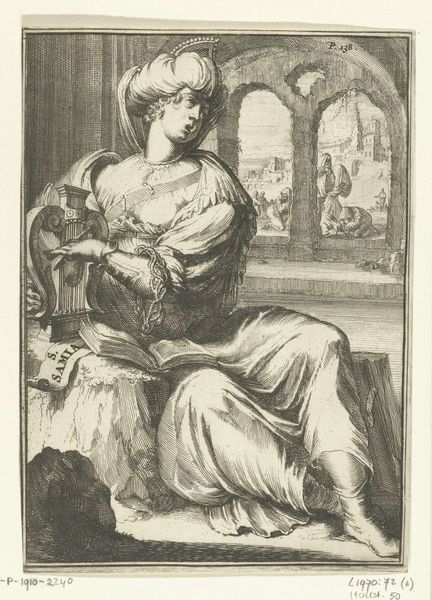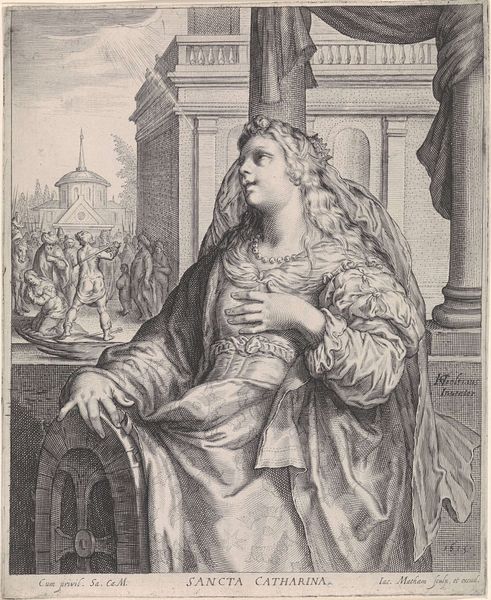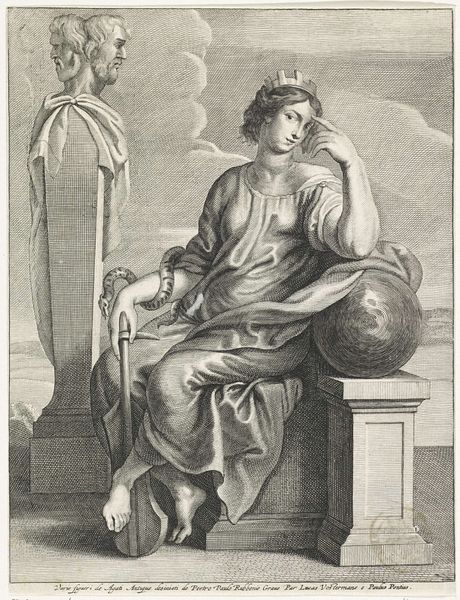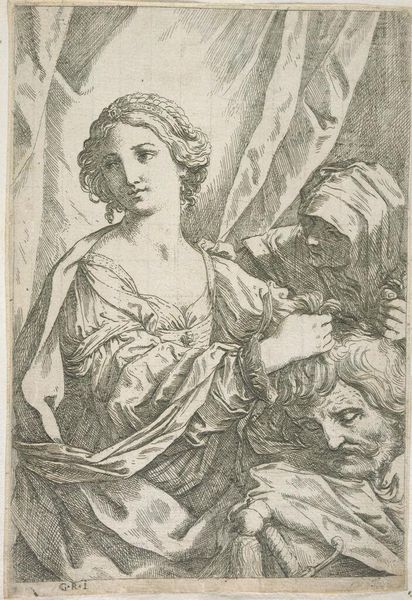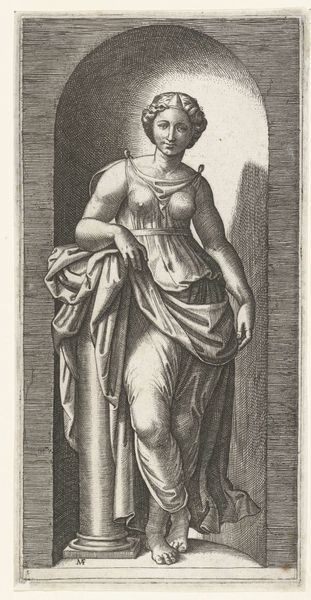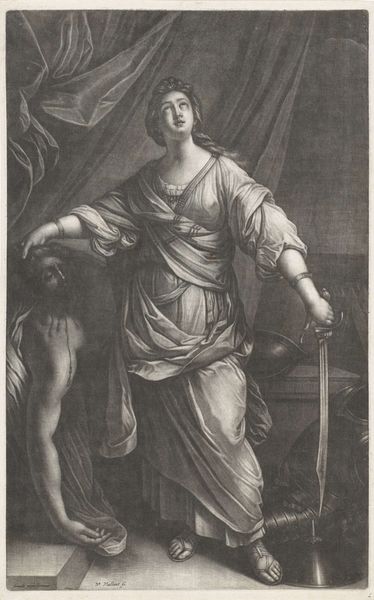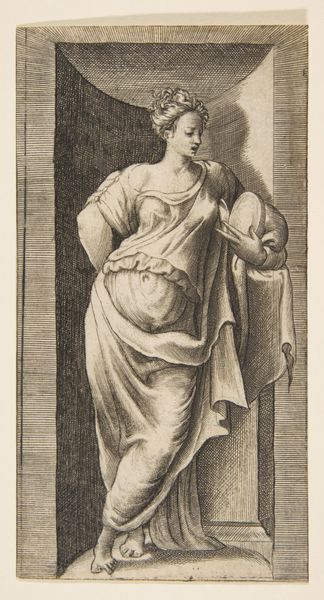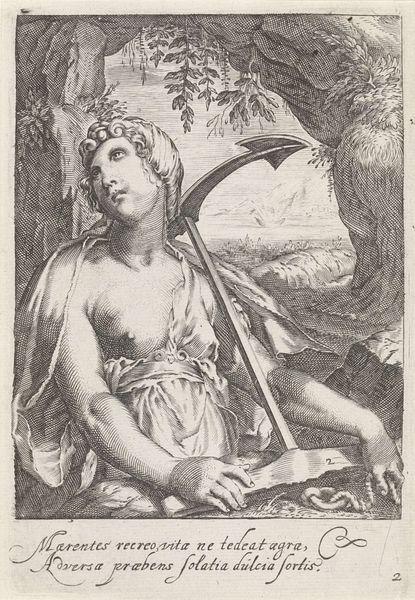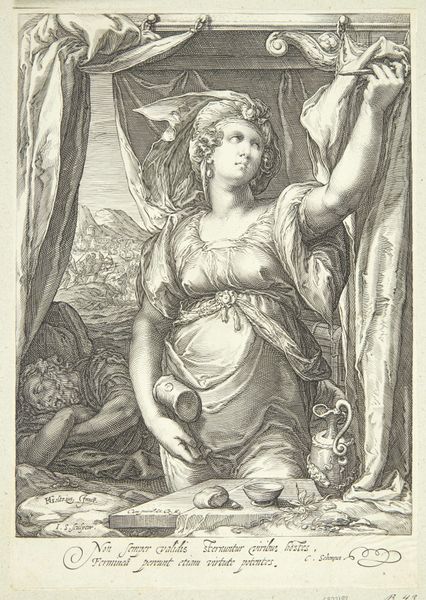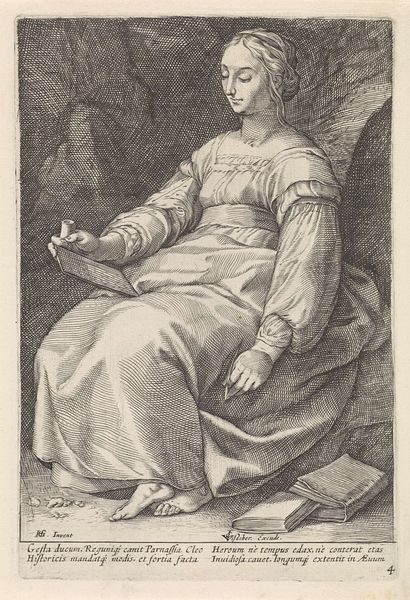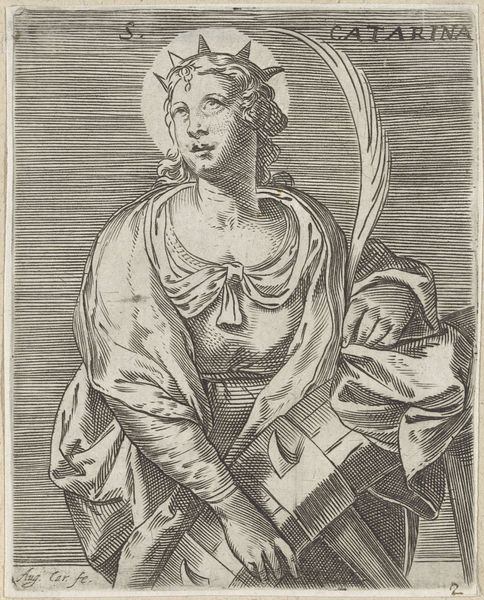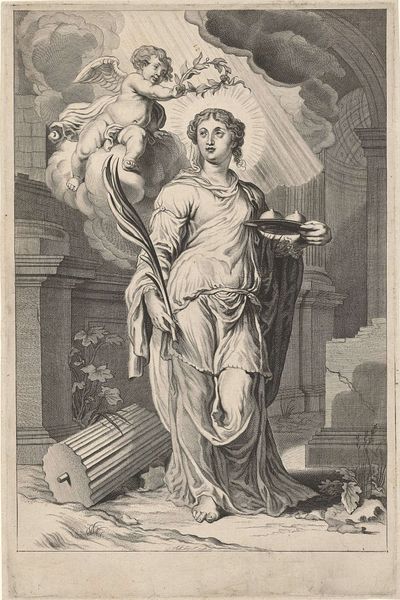
print, engraving
#
portrait
#
baroque
# print
#
figuration
#
portrait reference
#
engraving
Dimensions: height 310 mm, width 220 mm
Copyright: Rijks Museum: Open Domain
Curator: This engraving from 1602 by Jacob Matham depicts Mirjam, sister of Moses and Aaron. I'm struck by the materiality of the work— the precise lines carved into the copper plate. Editor: She appears melancholy, doesn’t she? Considering her important role in biblical stories – leading the women in song and dance after the crossing of the Red Sea – this image feels weighted down, subdued. I wonder what narratives of female leadership it silences. Curator: Matham, as an engraver, would have been deeply concerned with translating form through line and texture. Consider the drapery. He meticulously used the burin to create a convincing three-dimensional surface. And how might the engraver's labor and material constraints have informed this interpretation of Mirjam's story? Editor: It is crucial to examine why she's depicted in such a pensive state, removed from the actively celebrated acts that define her strength. I can't help but wonder if this melancholy ties to societal constraints imposed on women, especially within religious contexts. Perhaps she’s symbolic of the often overlooked or suppressed contributions of women in shaping religious and social histories. Curator: Absolutely, and examining those layers of labor – the physical effort needed to pull these prints for wider consumption – can broaden our understanding of who has access to the final product, and which audiences might receive its messages differently. Did women purchase and collect such engravings, or was their representation here largely directed toward a male gaze? Editor: Good point! I do find myself thinking about how contemporary audiences engage with representations like these. Does viewing this portrayal inspire re-examination or challenges to enduring power dynamics? It’s a continuous cycle, this relationship between art and societal values. Curator: Precisely! Matham’s process reminds us that artwork isn't only an image; it's a confluence of production, material circumstances and, ultimately, wider social forces. Editor: Yes, and recognizing its cultural origins can empower viewers today to look deeper at whose voices have shaped our interpretations of the past. There is so much power embedded within images that is vital to tease apart.
Comments
No comments
Be the first to comment and join the conversation on the ultimate creative platform.
